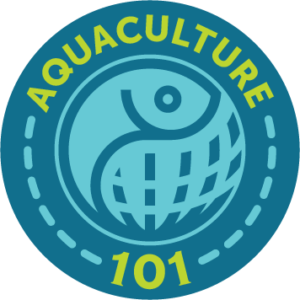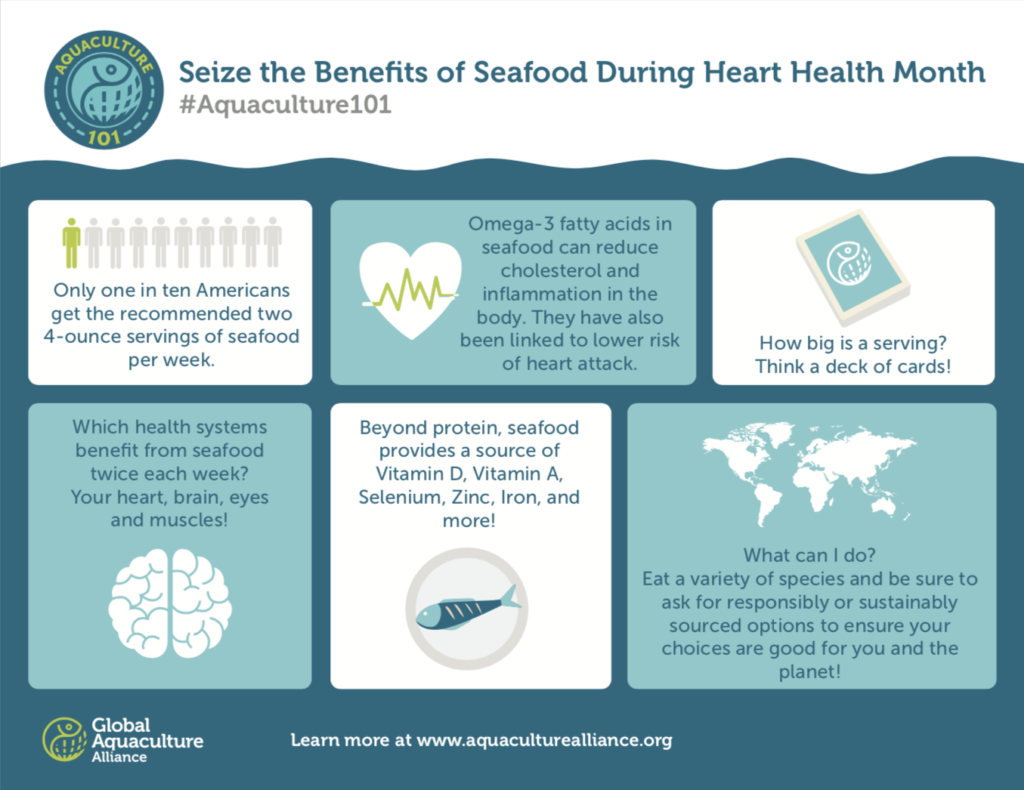Seize the Health Benefits of Seafood!
 Editor’s note: The following is a guest blog post by Sherri Clerk, MBA, RD, the brand manager for the Best Aquaculture Practices (BAP) certification program. Sherri is also a Registered Dietitian with a passion for healthy eating and sustainable sourcing. She worked as a clinical dietitian for ten years at Loyola University Medical Center. She launched “Change Your Weigh,” a multidisciplinary weight loss program as a nutrition consultant at the Loyola University Center for Health & Fitness. After obtaining her MBA at Loyola University Chicago, Sherri worked in brand management for Hormel Health Labs, McCain Foods, and High Liner Foods, helping to bring better-for-you innovation to the marketplace. As the BAP brand manager at Global Seafood Alliance, Sherri works to spread the word about the importance of responsible aquaculture and the assurances provided by the BAP certification program.
Editor’s note: The following is a guest blog post by Sherri Clerk, MBA, RD, the brand manager for the Best Aquaculture Practices (BAP) certification program. Sherri is also a Registered Dietitian with a passion for healthy eating and sustainable sourcing. She worked as a clinical dietitian for ten years at Loyola University Medical Center. She launched “Change Your Weigh,” a multidisciplinary weight loss program as a nutrition consultant at the Loyola University Center for Health & Fitness. After obtaining her MBA at Loyola University Chicago, Sherri worked in brand management for Hormel Health Labs, McCain Foods, and High Liner Foods, helping to bring better-for-you innovation to the marketplace. As the BAP brand manager at Global Seafood Alliance, Sherri works to spread the word about the importance of responsible aquaculture and the assurances provided by the BAP certification program.
To celebrate Heart Health Month (February), Sherri is guest blogging about how to incorporate more seafood into your diet, from a nutritional point of view.
Seize the Health Benefits of Seafood!
The beginning of a new year is typically a guilt-ridden time when people resolve to restrict food intake and make a commitment to wellness. In my years of nutrition counseling, I saw countless attempts at achieving perfection fail with a vengeance. Alternatively, an effort to add positive change to one’s life leads to personal satisfaction, improved mood, feelings of accomplishment, and often an improved weight or body image!
 So, what is the connection to seafood?
So, what is the connection to seafood?
Nine in 10 Americans are falling short of meeting the recommended two 4-ounce servings of seafood per week. Instead of restricting, focus on how you can add more seafood! The nutritional benefits of seafood will help the waistline as well as mood AND help prevent chronic disease.
What makes seafood “heart healthy”?
The large concentration of omega-3 fatty acids in seafood can reduce cholesterol and inflammation in the body. Similarly, the presence of these fatty acids have been linked to a lower risk of heart attack and other cardiac issues. Studies agree that these benefits appear to come from the cardioprotective effects of omega-3 fatty acids.
How big is a serving? How much do I have to eat?
Think of the size of a deck of cards. American portion sizes have grown. Notice the size of dinner plates when dining out in restaurants. Our perceptions of serving sizes are distorted as a result. A 4-ounce serving looks really small on the plate. The good news is that this serving size is achievable!
Which fish have the most health benefits?
All fish are an excellent source of high-quality protein. If the dish is prepared with minimal added fat and not fried, seafood is a low-calorie protein source. Additionally, as protein takes longer to digest, it leaves you feeling fuller and more satisfied longer.
Beyond protein, what are the other benefits?

- Omega-3 fatty acids
- B complex vitamins
- Vitamin D
- Vitamin A
- Selenium
- Zinc
- Iodine
- Iron
- Low in fat
- Low in saturated fat
Which health systems benefit from seafood twice each week?
- Heart
- Brain
- Eyes
- Muscles
So…what can I do now?
Eat more seafood: Strive for twice each week. Eat a variety of species, and at the grocery store or market, be sure to ask for responsibly or sustainably sourced options to ensure that your choices are good for you and for the planet!





